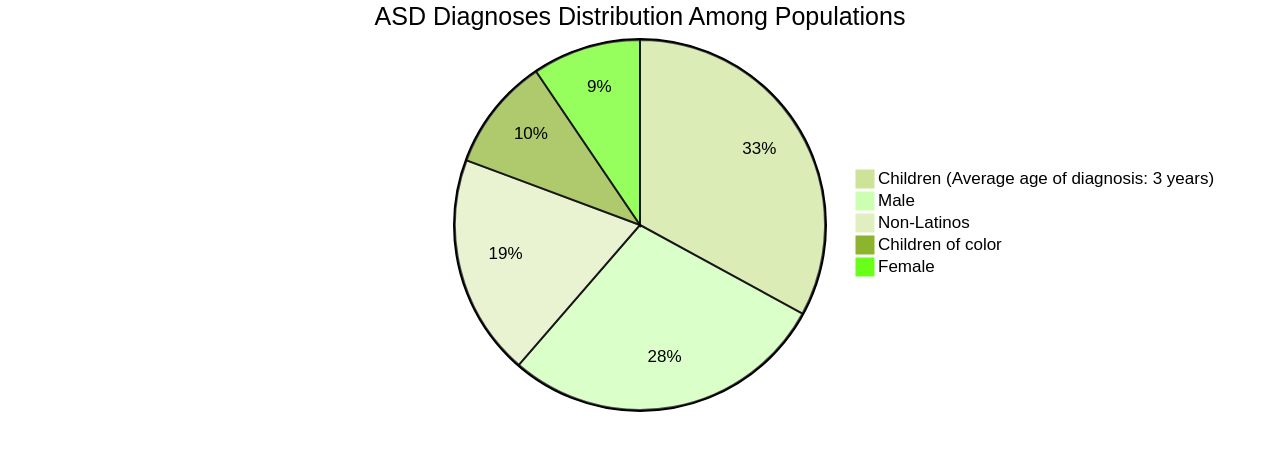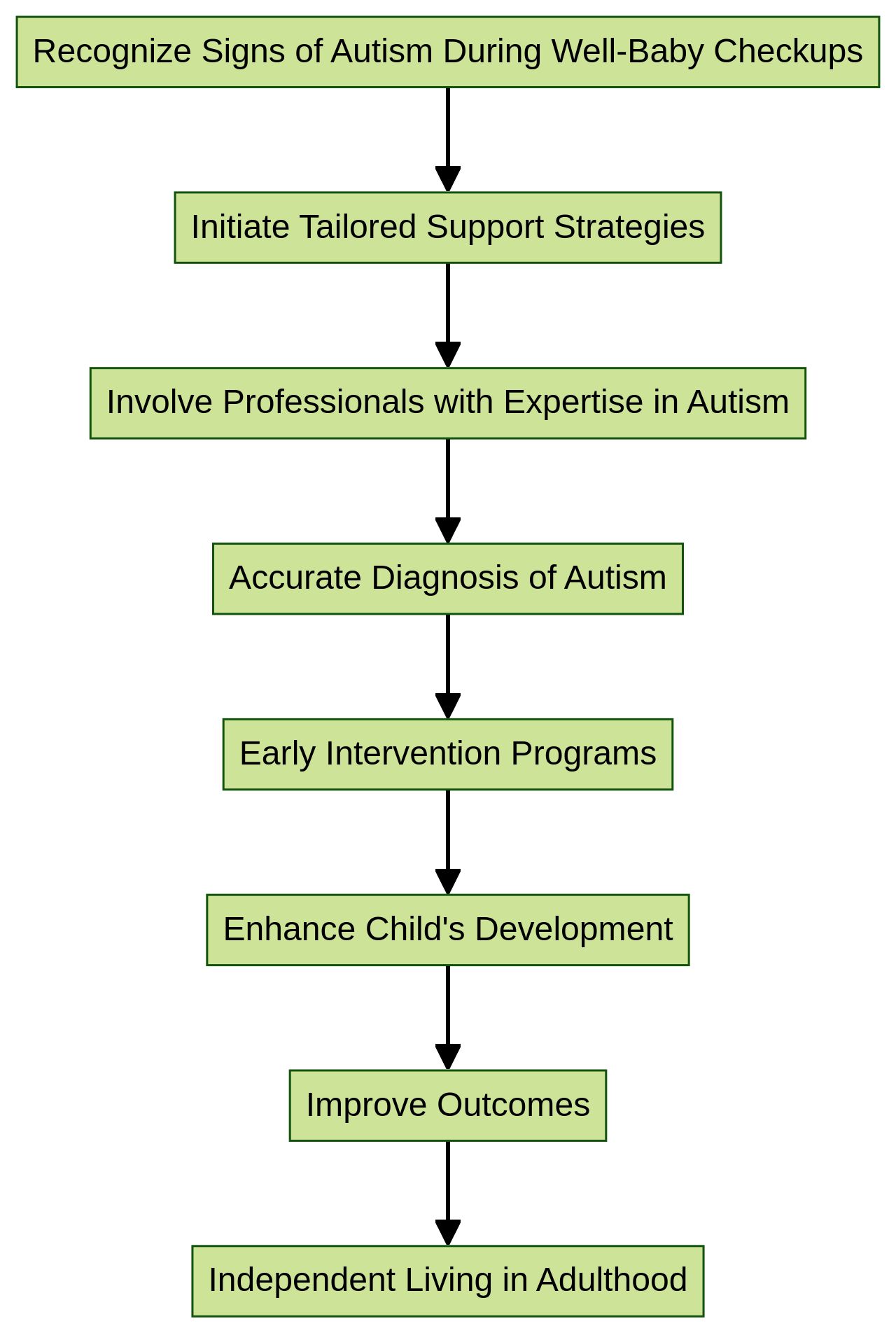Introduction
Understanding Autism Spectrum Disorder (ASD) is crucial for early intervention and support. ASD, a neurodevelopmental disorder, manifests in early childhood with varying degrees of social, communication, and behavioral challenges.
This article explores the importance of early identification, the early signs of autism, social communication and interaction challenges, and repetitive behaviors and sensory sensitivities in children with autism. By providing insights, resources, and research findings, this article aims to empower Parent Advocates in navigating the complexities of raising a child on the autism spectrum and ensure the well-being of their children.
Understanding Autism in Children
Understanding Autism Spectrum Disorder (ASD) is crucial for early intervention and support. ASD, a neurodevelopmental disorder, manifests in early childhood with varying degrees of social, communication, and behavioral challenges.
According to the DSM-5, core symptoms must be present from an early age, but they often become more apparent when social demands exceed the child's coping abilities. Children may develop coping strategies that mask symptoms, so careful observation by skilled professionals, including neurologists and psychologists, is essential for accurate diagnosis.
Research highlights the importance of early detection; however, the average age of diagnosis remains around 3 years old. Early interventions, such as targeted behavioral programs, can lead to significant improvements in language, cognitive abilities, and adaptive behavior.
Parents also play a critical role, as they can be trained to deliver interventions, enhancing parent-child interactions. The CDC's 2023 report revealed that the prevalence of autism has increased to 1 in 36 children, emphasizing the need for accessible services for diverse populations.
Unfortunately, disparities exist, with children of color often receiving later diagnoses due to barriers such as stigma and limited healthcare access. The rise in autism diagnoses calls for more trained professionals and inclusive services that support individuals with ASD across their lifespan. In Australia, the prevalence of autism suggests a male-to-female ratio of approximately 3:1, highlighting the gender disparity in ASD diagnoses. The National Disability Insurance Scheme (NDIS) plays a pivotal role in providing support, including early intervention, based on individualized plans. Education is also a fundamental right, with efforts focused on inclusive settings to nurture every child's potential. As we continue to advance our understanding of ASD, it is imperative to foster collaboration among professionals, policymakers, and communities to address the needs of individuals with autism and their families.

Importance of Early Identification
Recognizing the signs of autism early in a child's life is a game-changer. It paves the way for timely interventions that are key to enhancing the child's development and quality of life.
With early detection, often possible during well-baby checkups as early as 12 to 14 months, families can initiate tailored support strategies that address the child's individual challenges. This early head start is critical, as it not only improves the likelihood of better outcomes but also brings clarity and direction to parents who might otherwise feel lost in the complexities of raising a child on the autism spectrum.
Despite the consensus on the importance of early, intensive, and family-involved treatment, there's a gap in the availability and awareness of suitable programs, especially for the crucial birth to 3 age group. While some programs have shown promising results, the comparative effectiveness of different approaches remains under-studied.
This lack of comprehensive research underscores the need for continued efforts to develop, evaluate, and disseminate effective early intervention strategies. Moreover, the diagnostic process itself needs to be handled by professionals with expertise in autism, ensuring that the nuances of communication, behavior, and development are accurately interpreted. This multidisciplinary approach is vital for the early and precise diagnosis that is the cornerstone of effective intervention. With the right support, the potential for individuals on the autism spectrum to lead fulfilling lives is substantially increased, with research indicating that early intervention can lead to independent living in adulthood for a greater number of individuals.

Early Signs of Autism
Identifying early signs of autism in children can be subtle and complex. While some children might exhibit clear indicators such as limited eye contact, delayed speech development like babbling, and challenges in social communication, the manifestation of these signs can vary greatly.
Repetitive behaviors and a strong preference for routines and familiarity are also common. These behaviors, while potentially indicative of autism, are not definitive on their own and warrant professional evaluation for accurate diagnosis.
Groundbreaking research, such as the study conducted by Dr. Maggie O'Haire's lab and published in Frontiers of Psychiatry, has revealed the multifaceted benefits of service dogs in families with autistic children. Service dogs not only provide individualized support to the child but also enhance the entire family's resilience, interaction, and emotional well-being, ultimately becoming cherished family members.
The study underscores the profound, positive influence of service dogs on familial dynamics, highlighting their role in fostering social connections and reducing the experiences of judgment and stigma. Recent findings in canine cognition, reported in Current Biology, demonstrate that dogs possess a mental representation of words and objects, which suggests a deeper level of comprehension than previously understood. This research, led by Marianna Boros at Eötvös Loránd University, provides insights into the implicit language understanding of dogs, which could have implications for their roles as service animals. The significance of early intervention in autism is emphasized by statistics showing males are four times more likely to be diagnosed with autism and that early identification can lead to better long-term outcomes. Despite advances in recognizing early behavioral markers, the average age of diagnosis remains around 4.5 years, highlighting the need for increased awareness and screening efforts to ensure children receive critical early intervention.
Social Communication and Interaction
Understanding social cues is a complex process that often poses challenges for children with autism. They may find it difficult to interpret nonverbal signals, such as facial expressions and body language, which are essential for seamless communication and forming relationships. Initiating and maintaining conversations can be daunting, and grasping the unwritten rules of social interactions may not come naturally.
This can lead to obstacles in developing friendships and connecting with others. However, innovative interventions are showing promise in supporting these children and their families. Research led by Dr. Maggie O'Haire's lab has highlighted the positive influence of service dogs in fostering social interactions and emotional well-being for children with autism.
These service dogs are not just aids; they become integral family members, enhancing resilience and bringing joy to the household. Furthermore, a study published in eLife by the University of Geneva reveals that autistic children develop unique attentional preferences. Thus, interventions aimed at boosting social attention could potentially help them align more closely with typical developmental trajectories.
The statistics are compelling: early diagnosis by age 4 increases the likelihood of receiving services by fifty-fold. Unfortunately, disparities exist, with children of color often diagnosed later than White children, underscoring the need for better access to healthcare and early intervention services. As we see the prevalence of autism rising to 1 in 36, according to the CDC, the need for understanding, support, and tailored interventions becomes ever more critical.

Repetitive Behaviors and Sensory Sensitivities
Autism in dogs, much like in humans, can be characterized by repetitive behaviors and sensory sensitivities. For instance, dogs may engage in persistent movements such as circling or tail-chasing, demonstrate a strict adherence to routines, or have a deep fascination with certain objects or activities. These behaviors are often accompanied by unique sensory experiences, where a dog may either shy away from or seek out specific sensory stimuli, indicating a possible over or under-responsiveness to sensory input, such as sounds, textures, and smells.
Research has shed light on how canine companions can positively affect children with autism. Studies have shown that the presence of a dog can reduce stress levels in children, as indicated by lower salivary cortisol levels, particularly in those with insecure attachment styles or when in stressful situations. This calming effect is strengthened by physical contact with the dog, suggesting that the human-animal bond can be especially beneficial for children on the autism spectrum.
Recent findings also suggest that therapy dogs working with autistic children do not exhibit significant stress, as measured by stress biomarkers like salivary cortisol, alpha-amylase, and oxytocin. This is reassuring for the welfare of the animals involved in therapy sessions and highlights the potential for a mutually beneficial relationship between dogs and children with autism. However, it remains crucial to continue monitoring and researching the impact of such interactions on therapy dogs to ensure their well-being is maintained.
Conclusion
In conclusion, early identification of Autism Spectrum Disorder (ASD) is crucial for enhancing a child's development and quality of life. Recognizing the early signs of autism, such as limited eye contact, delayed speech development, and repetitive behaviors, requires professional evaluation for an accurate diagnosis.
Social communication and interaction pose challenges for children with autism, but innovative interventions like service dogs show promise in fostering social interactions and emotional well-being. Boosting social attention can help align autistic children with typical developmental trajectories.
Repetitive behaviors and sensory sensitivities are common in both humans and dogs with autism. Canine companionship reduces stress levels in children with autism, while therapy dogs exhibit minimal stress during sessions.
Early intervention is key to improving outcomes for individuals on the autism spectrum. Collaboration among professionals, policymakers, and communities is essential to address the needs of individuals with ASD and their families. By empowering Parent Advocates with resources and support, we can navigate the complexities of raising a child on the autism spectrum and ensure their well-being. Together, we can make a difference in the lives of individuals with ASD by promoting early identification, providing appropriate interventions, and fostering understanding and support within our communities. Let us work together to create a more inclusive society that embraces the unique strengths and challenges of individuals on the autism spectrum.




